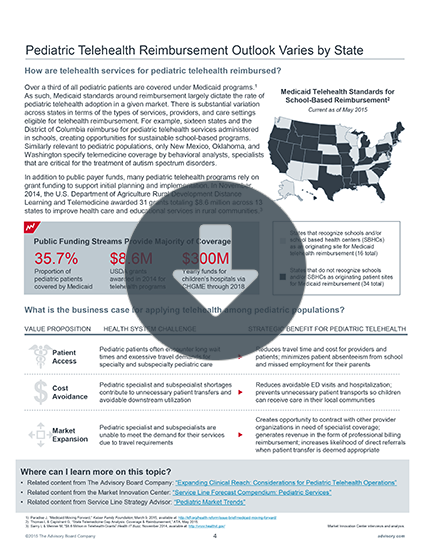Auto logout in seconds.
Continue LogoutChildren don't play enough, and that could have some far-reaching consequences for their future, according to a recent policy report from the American Academy of Pediatrics (AAP), Jenny Anderson writes for Quartz.
Want the latest information for your next pediatrics meeting? Get our slides.
Why play is important
The report centered on unstructured playtime for children, and how unstructured play can help children develop necessary skills to succeed in the future. According to AAP, there are four types of play:
- Object play;
- Outside play;
- Physical or locomotor play; and
- Social or pretend play.
The report cited large amounts of research that demonstrate why play is important for a child's development. For instance, the report noted that research has shown physical or locomotor play—also referred to as "Rough-and-tumble play"—"enables children to take risks in a relatively safe environment, which fosters the acquisition of skills needed for communication, negotiation, and emotional balance and encourages the development of emotional intelligence."
Anderson notes that other research has shown countries that offer more outdoor recess see greater academic success in children when they get older. Similarly, randomized trials of seven- to nine-year-olds have shown physical play "enhanced attentional inhibition, cognitive flexibility, and brain functioning that suggested better executive control," Anderson writes.
What's more, pretend play helps children learn self-regulation, as they have to determine how their imaginary world will work, which improves "their ability to reason about hypothetical events," according to Anderson.
The report also emphasized that play is especially important for children exposed to significant levels of stress. "The mutual joy and shared communication and attunement (harmonious serve and return interactions) that parents and children can experience during play regulate the body's stress response," the report said.
Further, psychologists not associated with the AAP report have said a lack of play could result in rising rates of mental health conditions in teens, Anderson writes.
Playtime on the decline
Despite those benefits, AAP in the report wrote that parents and schools have become more focused on academic performance and, as a result, unstructured playtime for children has decreased significantly.
According to the report, playtime for children decreased by 25% between 1981 and 1997. In addition, a national survey of nearly 9,000 preschool children and parents found just 51% of children went outside or played once a day with either parent. Further, 30% of kindergartens in the United States no longer have recess, Anderson writes.
The report attributed the lack of play among today's children to social pressures. "Parental guilt has led to competition over who can schedule more 'enrichment opportunities' for their children," the report said, adding, "As a result, there is little time left in the day for children's free play, for parental reading to children, or for family meal times."
How to bring play back
AAP in the report suggested physicians can help to encourage more unstructured playtime for children. "At a time when early childhood programs are pressured to add more didactic components and less playful learning, pediatricians can play an important role in emphasizing the role of a balanced curriculum that includes the importance of playful learning for the promotion of healthy child development," the report said.
AAP also recommended preschools emphasize playful learning (Anderson, Quartz, 8/21).
Review the major trends in pediatric behavioral health
The CDC estimates that nearly $247 billion is spent annually on the treatment and management of childhood mental disorders. Further, pediatric patients and caregivers often struggle to access high-quality behavioral health expertise due to a limited number of specialists and fragmented approaches to behavioral health services.
Download the slides to understand the case for improving coordination between behavioral health and pediatrics, and describe four successful models that increase access to behavioral health care.
Don't miss out on the latest Advisory Board insights
Create your free account to access 1 resource, including the latest research and webinars.
Want access without creating an account?
You have 1 free members-only resource remaining this month.
1 free members-only resources remaining
1 free members-only resources remaining
You've reached your limit of free insights
Become a member to access all of Advisory Board's resources, events, and experts
Never miss out on the latest innovative health care content tailored to you.
Benefits include:
You've reached your limit of free insights
Become a member to access all of Advisory Board's resources, events, and experts
Never miss out on the latest innovative health care content tailored to you.
Benefits include:
This content is available through your Curated Research partnership with Advisory Board. Click on ‘view this resource’ to read the full piece
Email ask@advisory.com to learn more
Click on ‘Become a Member’ to learn about the benefits of a Full-Access partnership with Advisory Board
Never miss out on the latest innovative health care content tailored to you.
Benefits Include:
This is for members only. Learn more.
Click on ‘Become a Member’ to learn about the benefits of a Full-Access partnership with Advisory Board
Never miss out on the latest innovative health care content tailored to you.

